
Content marketing is constantly evolving, which is what we here on the HubSpot blogging team love about our jobs. It keeps things interesting. And while it’s easy to get caught up in experimenting with innovative content, it’s important that we pay close attention to how our readers are changing, too.
According to HubSpot Research, 2016 marks the start of a new phase of technological development, where new innovations and consumer preferences will usher in a new way of how marketers will do business. 
Our research team surveyed over 1,000 internet users worldwide to learn about their preferences and behaviors when it comes to their content consumption habits. In this article, we’re diving deeper into two specific trends to discuss how marketers can prepare their content strategies to meet the needs of their readers.
What content types do readers want to see more of in the future?
HubSpot Research found that internet users’ behaviors are changing to reflect a growing interest in visual content. They’re also shifting where they’re reading content, choosing social media platforms over of more traditional blog and long-form outlets:
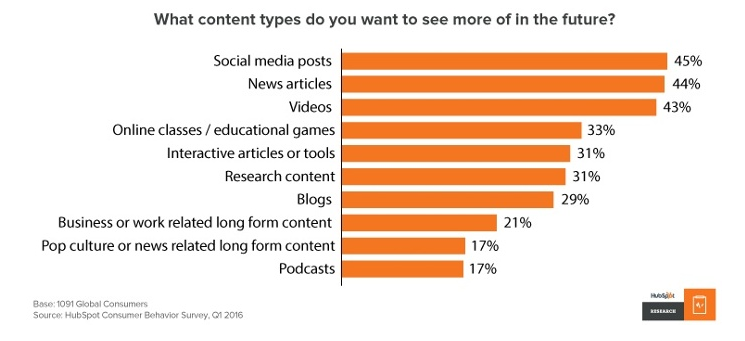
It’s important to note that these survey results don’t mean that content creators should abandon mediums such as blogging or podcasting, as these content outlets will continue to provide value over time. Instead, what the above chart suggests is that marketers should develop a more diversified strategy to meet the growing demand for alternative content types such as video and social media content.
How are readers consuming content?
For content creators, it’s important to know what kind of content readers want, and also how they want to read it. HubSpot found that different types of content are more likely to retain readers’ close attention than others. Generally speaking, longer written content is more likely to be skimmed, and content with more visual elements, such as videos and images, are more likely to be thoroughly consumed:
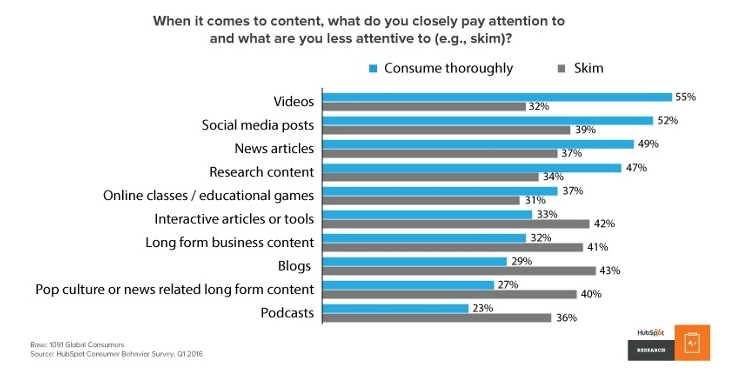
Now that we’ve reviewed the types of content readers want and how they want to consume them, let's take a look at some effective examples of below.
10 Pieces of Content Your Audience Actually Wants to See
Click on the categories below to check out examples of the types of content your audience is looking for:
Videos
Video is and will continue to be a huge part of content marketing: According to Cisco, 80% of web traffic will be video by 2019. That's a lot. And this same sentiment is reflected in the latest report from HubSpot Research, where 45% of survey respondents admitted to watching 1+ hours of video on Facebook and YouTube each week.
To further illustrate this point, let's consider that users watch 8 billion videos on Facebook and 10 billion videos on Snapchat per day. Today, social media platforms are becoming more about content sharing and discovery, so an integrated video and social media strategy will be necessary for brands seeking to compete. (Learn more about creating video for social media in our free ebook.)
1) Tasty on BuzzFeed
BuzzFeed’s Tasty videos are a great example of the type of video content people want to consume. According to their Facebook Page, they can be best described as “snack-sized videos and recipes you'll want to try.” It’s as simple as that.
Each video covers one recipe in an engaging, fast-motion format -- making them tailor-made for Facebook scanners.
Why this work so well:
- They’re short and sweet. Mini Matters reports that YouTube viewers favor short videos, approximately 42 seconds in length.
- They don’t require sound to understand what’s going on. According to Digiday, 85% of videos on Facebook are watched without sound.
- They teach how-to skills. Google reports that searches for “how to” video content have increased 70% year-over-year.
Views: 1.1 million
2) Vox Media
Vox’s video content varies between news, explainers, entertainment, and how-to videos (check out their full YouTube channel here), and their videos are highly shareable and easy to consume.
Why this work so well:
- The video are around two minutes in length. According to research from Wistia, this length is optimal to ensure viewers watch all the way through to the end.
- They feature captions and animations so viewers can understand the gist of the video without having to turn on the volume.
- They cover breaking news, which 64% of Twitter users surveyed said they want to see more of.
Views: 2.7 million
Social Media
The global social media audience is vast: Facebook has 1.7 billion daily active users (DAUs), Instagram has 500 million, Twitter has 313 million, and Snapchat has 150 million. Users are consuming more content than ever on social media networks, and content creators will have to shift their publication strategy to meet their audience where they’re gathering information.
3) Intel
#TBT Ready for lift-off: all systems were a go for an amazing Drone 100 night at Sydney Opera House. #IntelAtVivid pic.twitter.com/z3gLXkZbuC
— Intel (@intel) September 8, 2016
Here’s another example of the power of video marketing in the context of social media posts -- the second most popular content form users are looking for. Intel creates products in the information technology and cloud computing space, but their tweets touch on how technology interacts with the rest of the world.
For example, this tweet shares a video from Drone 100, an event Intel hosted in Sydney, Australia where users launched Intel drones for a crowdsourced light show. (Learn more about how to use Twitter for business here.)
Why this work so well:
- The tweet uses video, which drives engagement: 82% of Twitter users watch video content, and Twitter videos drive more retweets, likes, and replies than video on third-party players.
- The tweet uses relevant hashtags sparingly. Locowise found that numerous hashtags don’t contribute to greater Twitter engagement, but that the occasional relevant hashtag, such as #TBT or a branded campaign hashtag, can help new users find your content.
Retweets: 190, Likes: 492
4) FedEx

FedEx features stunning photos of their trucks, planes, and envelopes around the world, and what’s more, the vast majority of their posts are photos taken by other Instagram users. Rather than posting boring photos from a mail sorting facility, FedEx featured this gorgeous shot of a branded plane with a full moon in the background.
Why this works so well:
- Their Instagram features user-generated content (UGC), which humanizes brands and promotes greater brand engagement.
- Their posts feature hashtags, which help users find new Instagram accounts to follow. According to research from TrackMaven, Instagram posts with four to five hashtags saw an increase in interactions.
Likes: 1,337
News Articles
Four in ten Americans get their news online, and 55% of HubSpot Research respondents find new content by searching on publications’ websites directly. That said, online newspapers and magazines should continue regular, if not daily, publication to keep up with reader demand.
5) ESPN
According to our research, more readers want news articles, but that doesn’t mean they want to read them thoroughly. As 37% of those surveyed indicated they would be more likely to skim-read news articles, this article from ESPN does a great job of balancing the desires of skim-readers and content devourers alike.
Why it works so well:
- This longer article features an accompanying video for those who don’t have the time to read the full text.
- It includes bullets and images to maintain reader attention and to break up larger paragraphs of text.
Facebook Shares: 1.9K
6) Mashable
Here’s a shorter news article from Mashable, the blog-turned-news outlet that covers anything and everything related to the technology in our lives. This article does a great job of balancing the needs of both skim-readers and close-readers with its comprehensive overview without overwhelming readers.
Why it works so well:
- The article incorporates tweets and external content from Elon Musk’s master plan to make the article more diverse and visually interesting.
- The article uses visuals, which are more memorable than text alone according to the picture superiority effect.
- It has a clear headline that tells the story of the article if readers don’t make it to the end, which Copyblogger tells us only 20% will.
Social Media Shares: 2.2K
Research Content
Based on our survey, readers are looking for original research that can be consumed thoroughly, but also easily understood. Research publications should look to other trends in content marketing, such as the increased interest in visual elements, to guide their research strategy.
7) Chartbeat
Here’s a short and sweet research article from the folks over at Chartbeat. If you’re producing research content at your organization, there are a few strategies you can test to get more readers looking at your work.
Why it works so well:
- It uses effective data visualization. According to Brain Rules, relevant images accompanied by reading or hearing information helps us remember 65% of the information days later -- when we read text alone, we only remember 10%.
- It uses color, which is an important factor when it comes to creating visual elements: Color improves content readership, recall, and attention span by roughly 80%.
- Text is broken up with quickly digestible images, like the clearly captioned graphs above. This is important because research shows that readers might only read 20% of an article’s text, while scanning the rest.
- The content is actionable. Readers want to come away knowing how to apply the results of findings to their own strategies.
8) Nielsen
Here’s another cool graphical breakdown of research from Nielsen, which researches consumer and media behaviors around the world. They conducted detailed research about global eating habits and how they’ve evolved according to demographic and socioeconomic changes around the world, but the published results aren’t lengthy. It’s easy to scan this research and quickly glean the results without poring over a huge paper.
Why it works so well:
- The headline inspires curiosity in the reader and takes advantage of a phenomenon known as the curiosity gap, which makes readers more likely to click and learn new information.
- The research article uses information-carrying images, such as graphs, infographics, and charts, which readers typically pay more attention to than the rest of the text on the page.
Online Classes/Educational Games
9) CodeAcademy
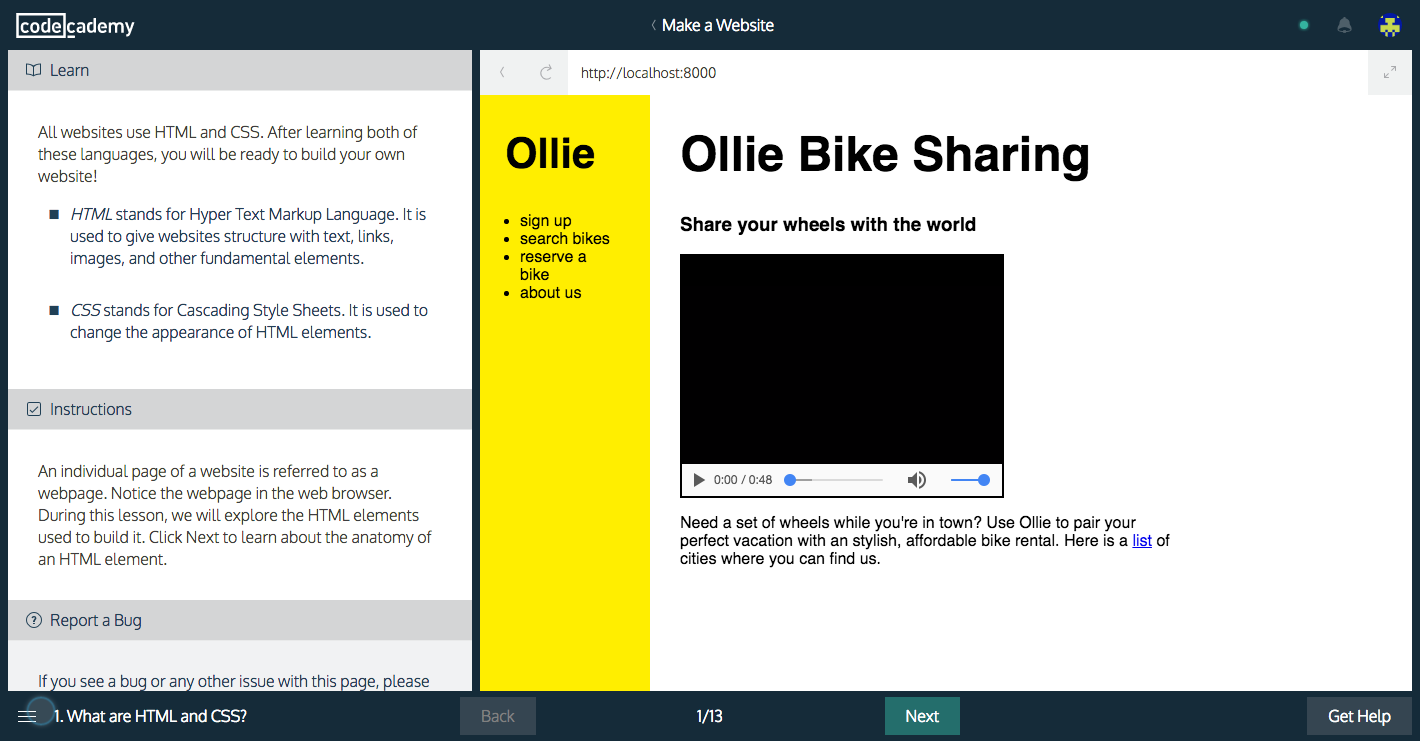
CodeAcademy’s online coding classes are easy, portable, and, most importantly, free. Anyone can sign up for these interactive lessons and see the website, game, or program they’re building as they complete each module so they can see their finished product.
Why they work so well:
- The classes meet a demand: CodeAcademy teaches Java, SQL, and Python, which are among the most popular coding skills in terms of their demand in the workplace.
- The classes have clear course objectives and are easy to use, which, according to an Eduventures survey, were students’ top priorities when pursuing online classes. CodeAcademy’s bare bones platform is split so that students can always see an overview on the left-hand side of what they’re studying and how it will help them long-term.
Users: 24 million
10) HubSpot Academy Certifications
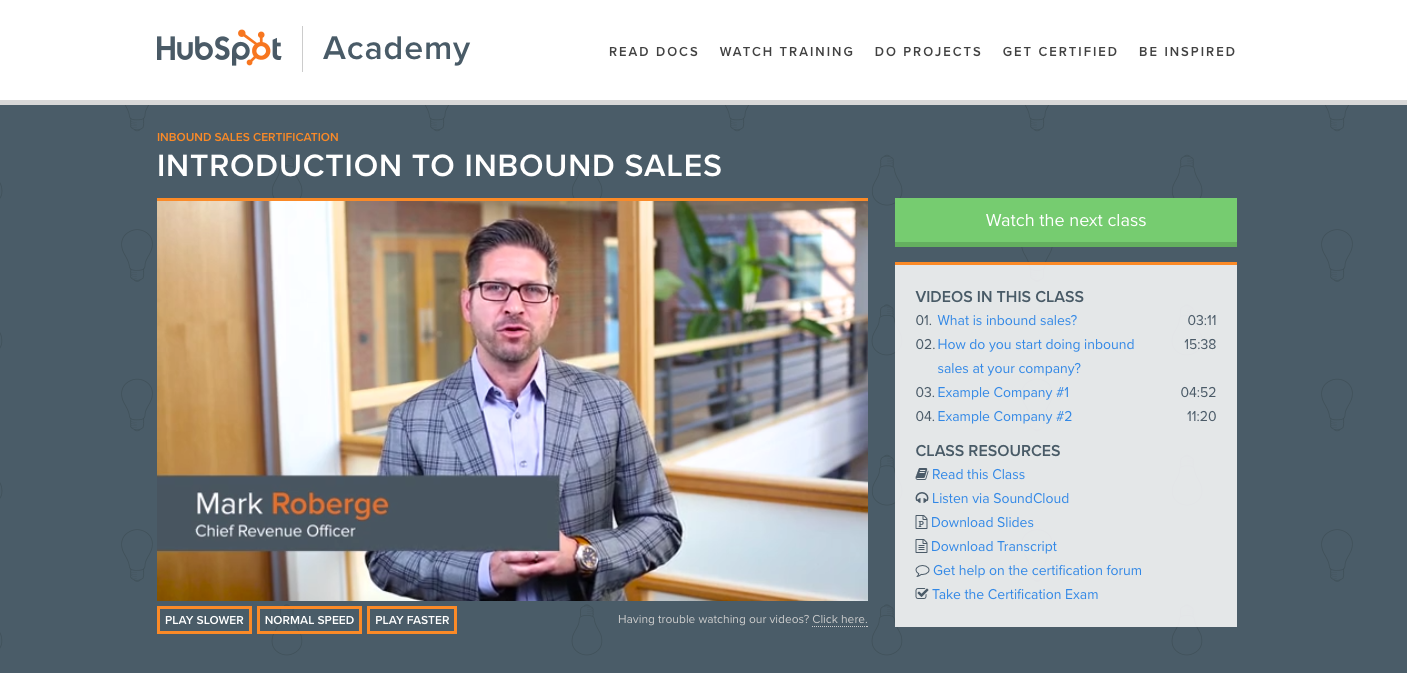
HubSpot Academy Certifications are free online training courses centered around the development of marketing and sales skills. The Inbound Marketing Certification course, for example, provides folks with an opportunity to invest in their career by staying up-to-date on the latest marketing best practices.
Why they work so well:
- The classes are self-paced. This approach represents a growing trend in the e-learning space, as it allows student the flexbility they need to work around their schedules.
- The classes meet a demand. The HubSpot Academy Certifications cover critical areas such as inbound marketing, sales, and email marketing -- some of the most in-demand skills in the marketing and advertising industries.
Users: 50K
Common Themes for Marketers
That was a lot of information. Let’s review some common themes and takeaways that you can apply to your content strategy after finishing this article:
- Keep video content short and sweet. Ideally, it won’t require sound to be played.
- Video content should answer a question or meet a demand that lots of people are looking for.
- Humor (when appropriate) makes for memorable content.
- Images and videos are key to more engaging social media posts.
- Social proof helps beef up claims behind your content.
- Experiment with user-generated content for greater social media engagement.
- Use clear, grabbing headlines to draw the attention of readers.
- Use images, bullets, and formatting to break up text in longer articles for skim-reading.
- Make content actionable so readers can come away knowing what to do next.
- Use graphs and infographics to display numerical data when possible.
Now that you know how to create different types of content that 2016 readers are looking for, check out the rest of our content marketing research, and learn key tips and tricks for writing great content today.
What’s your favorite type of content? Are you more likely to skim-read some types of content more than others? Share with us in the comments below.


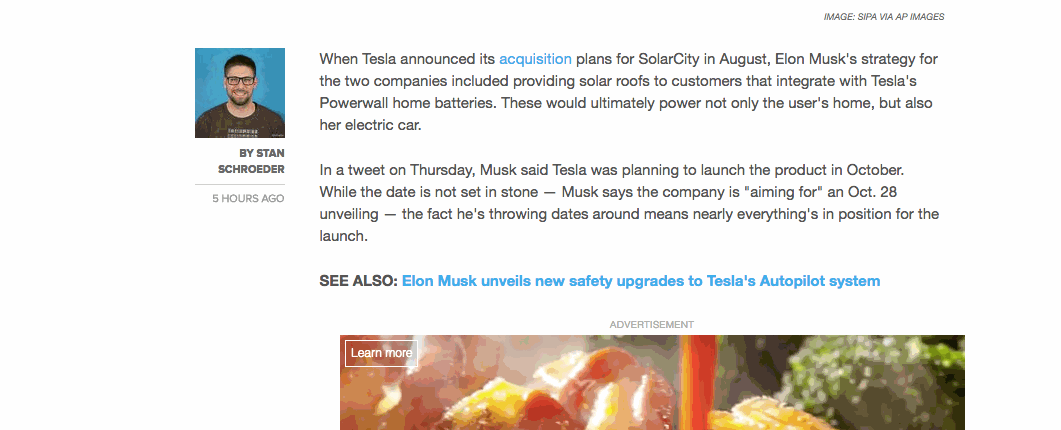
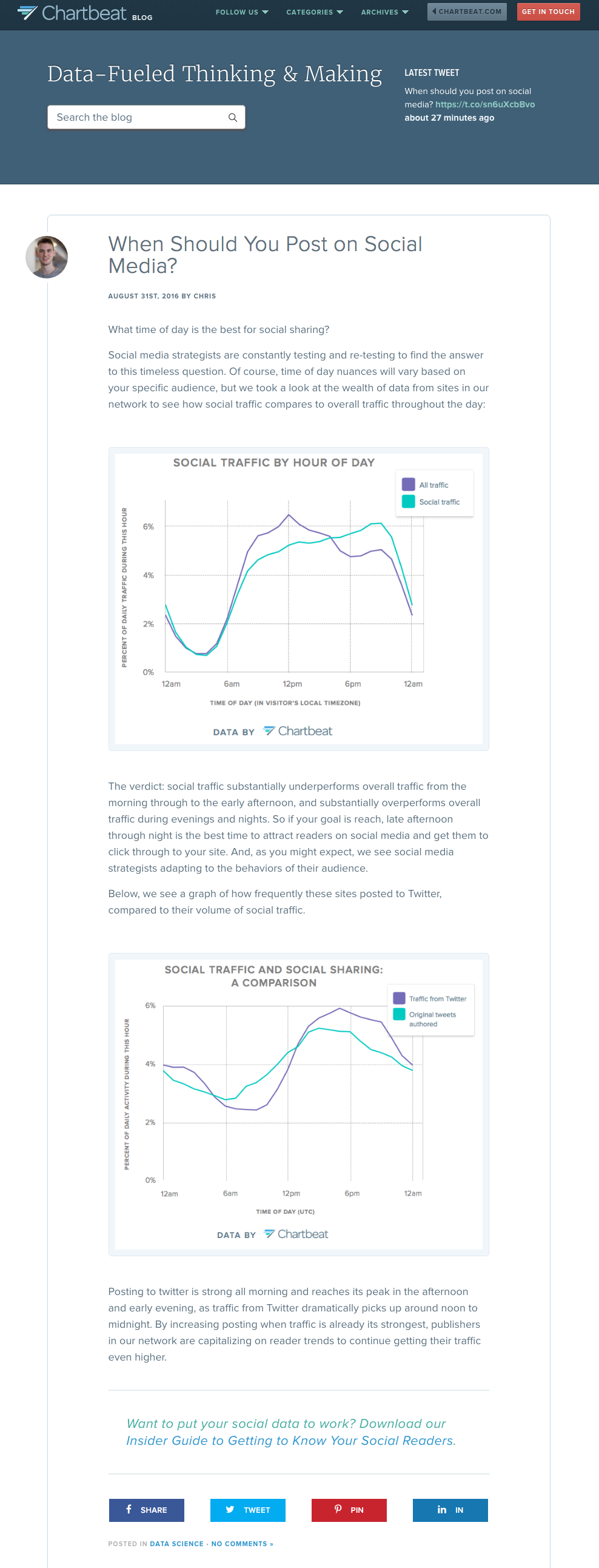

No comments:
Post a Comment